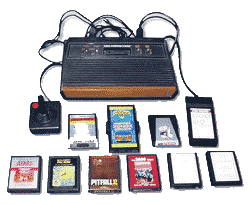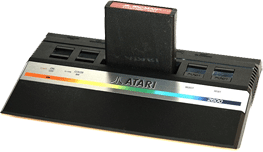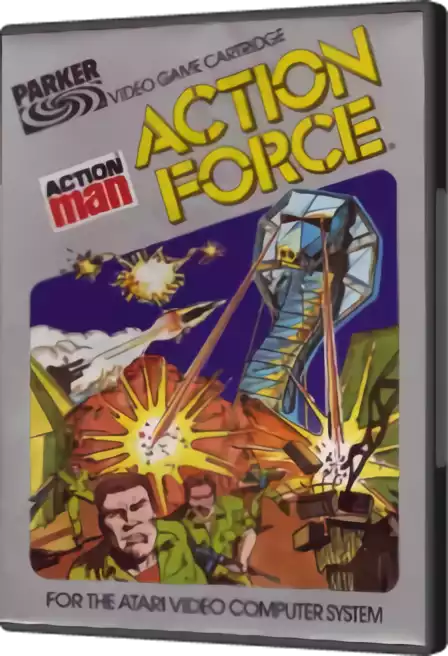Presentation :
The Atari 2600 is a video game console released in September 1977 by Atari, Inc. It is credited with popularizing the use of microprocessor-based hardware and ROM cartridges containing game code, a format first used with the Fairchild Channel F, instead of having non-microprocessor dedicated hardware with all games built in.


History :
Atari Inc. had purchased an engineering think tank in 1973 called Cyan Engineering to research next-generation video game systems, and had been working on a prototype known as "Stella" (named after one of the engineers' bicycles) for some time. Unlike prior generations of machines that used custom logic to play a small number of games, its core was a complete CPU, the famous MOS Technology 6502 in a cost-reduced version, known as the 6507. It was combined with a RAM-and-I/O chip, the MOS Technology 6532, and a display and sound chip known as the Television Interface Adapter, (TIA). The first two versions of the machine contain a fourth chip, a standard CMOS logic buffer IC, making Stella cost-effective. Some later versions of the console eliminated the buffer chip.[citation needed] Programs for small computers were generally stored on cassette tape, disk or paper tape. By the early 1970s, Hewlett Packard manufactured desktop computers costing thousands of dollars such as the HP 9830, which packaged Read Only Memory (ROM) into removable cartridges to add special programming features, and these were being considered for use in games. At first, the design was not going to be cartridge-based, but after seeing a "fake" cartridge system on another machine, they realized they could place the games on cartridges essentially for the price of the connector and packaging. In August 1976, Fairchild Semiconductor released their own CPU-based system, the Video Entertainment System. Stella was still not ready for production, but it was clear that it needed to be before there were a number of "me too" products filling up the market—which had happened after they released Pong. Atari Inc. simply did not have the cash flow to complete the system quickly, given that sales of their own Pong systems were cooling. Nolan Bushnell eventually turned to Warner Communications, and sold the company to them in 1976 for US$28 million on the promise that Stella would be produced as soon as possible. Key to the eventual success of the machine was the hiring of Jay Miner, a chip designer who managed to squeeze an entire wire wrap of equipment making up the TIA into a single chip. Once that was completed and debugged, the system was ready for shipping. By the time it was released in 1977, the development had cost about US$100 million


Technical Specification :
- Main cpu : MOS Technologies 6507 à 1.19 MHz
- audio and video processor : TIA resolution : 160x102
- colors : 128 (16 colors with 8 intensity level)
- sound : two way mono
- Main memory : 128 bit VLSI
- Rom Memory (game cartridge) : from 2kb to 64kb
- Input : two DB9 slot for joystick, paddles, « trackballs », or 12-touch keyboard (0–9, #, and *)
- six switch (originale design): on/off, TV Signal (black and white or colors), Difficulty for each player (called A and B), Select, and Reset
- Ouput : black and white or colors ( NTSC or PAL ) and sound ouptut.







.webp)
.webp)
